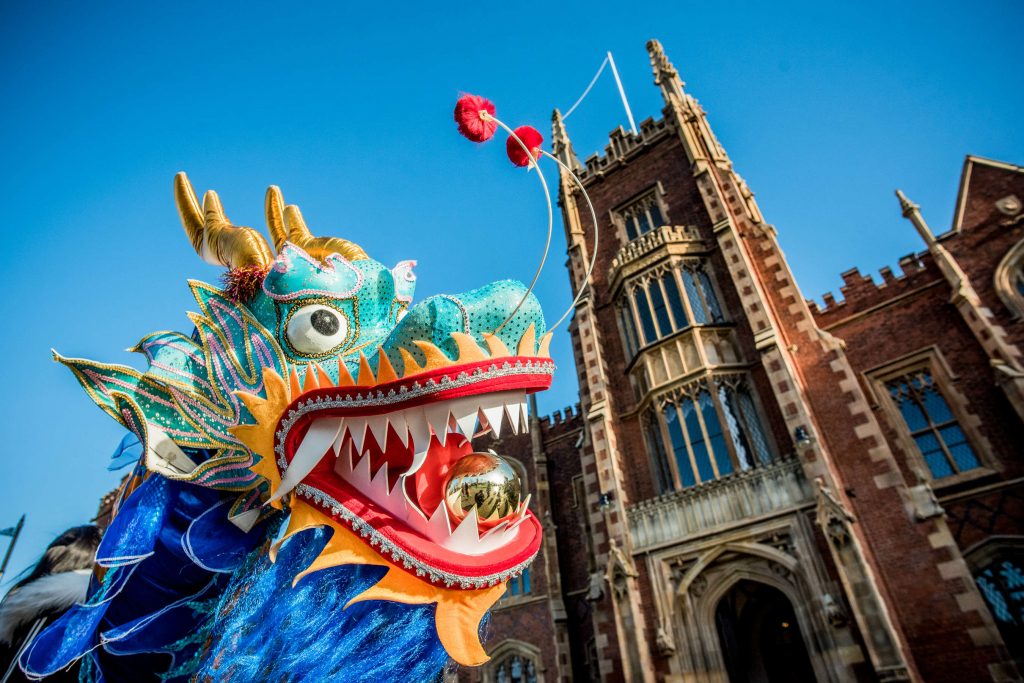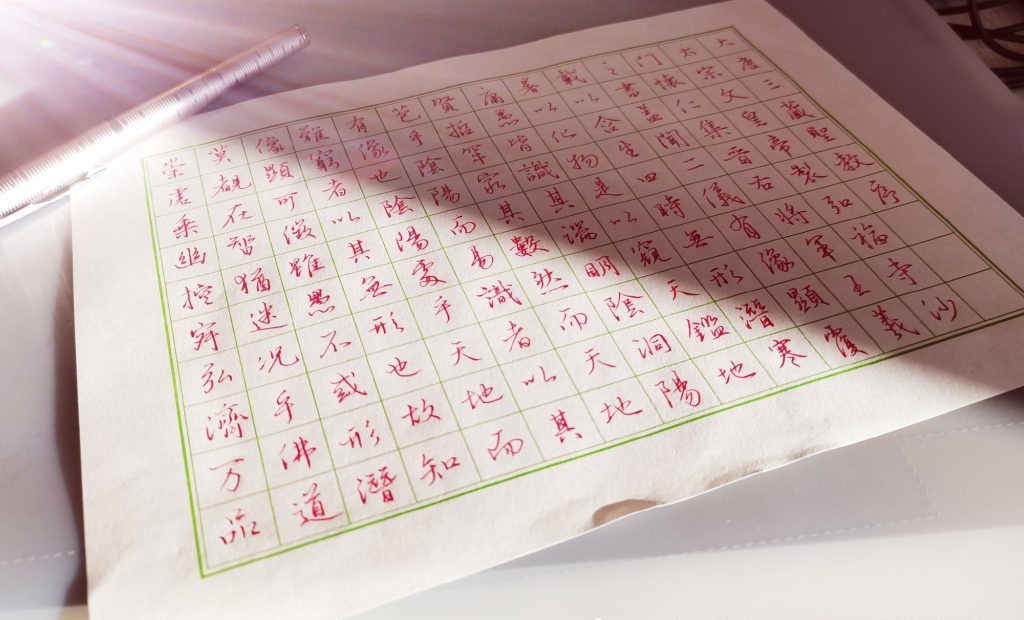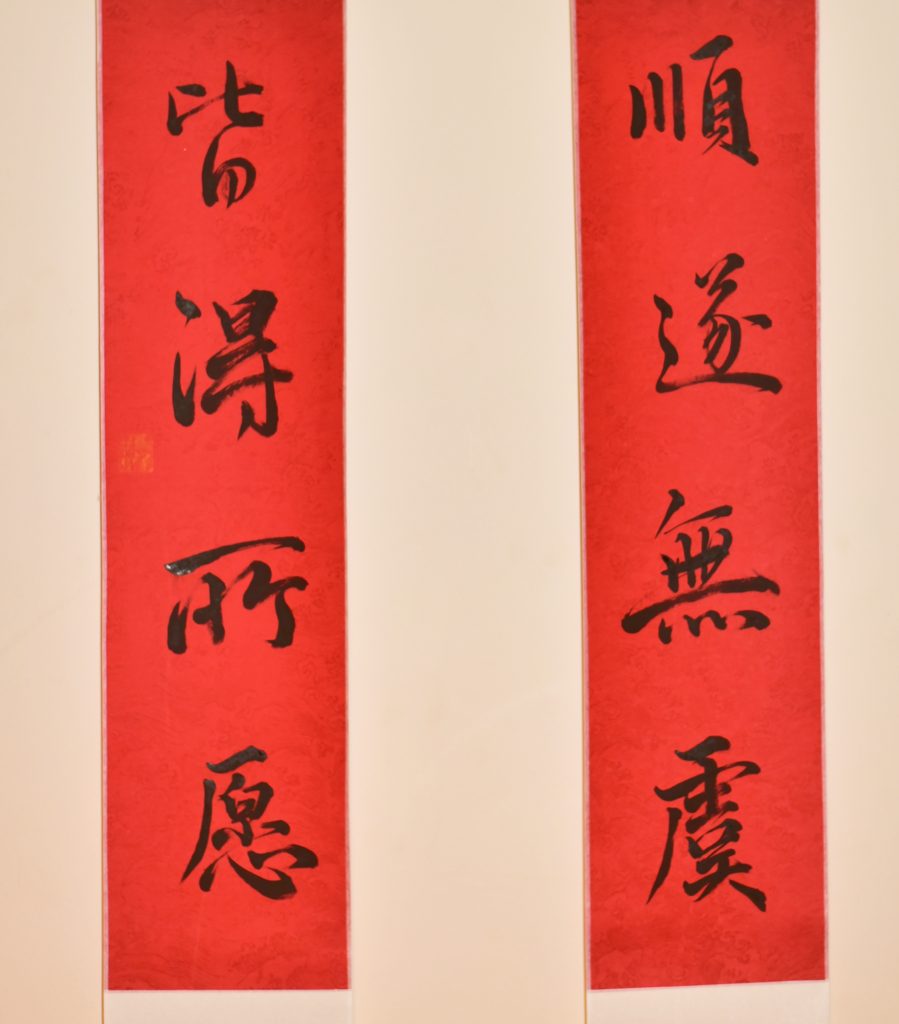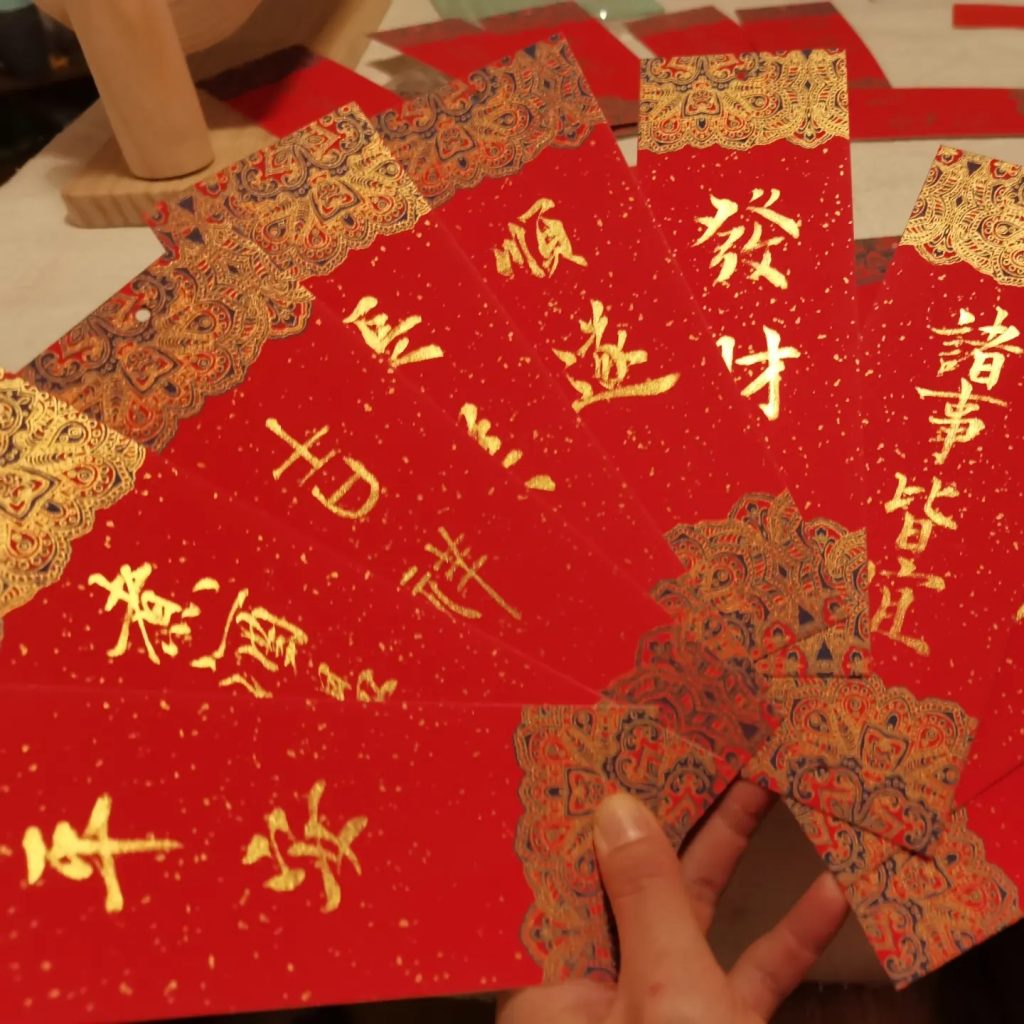The date for the Chinese day was selected from Guyu (“Rain of Millet”), which is the 6th of 24 solar terms in the traditional East Asian calendars, to pay tribute to Cangjie. Cangjie is a very important figure in ancient China, claimed to be an official historian of the Yellow Emperor and the inventor of Chinese characters. Legend has it that he had four eyes and four pupils, and that when he invented the characters, the deities and ghosts cried and the sky rained millet. From then on, Chinese people celebrate the day Guyu in honour of Cangjie. In the Gregorian calendar, it usually begins around April 20.
The UN
On this occasion we provide this special edition to invite you to join us in celebrating the charm of the Chinese language – in its written form through calligraphy and spoken form through recitation.
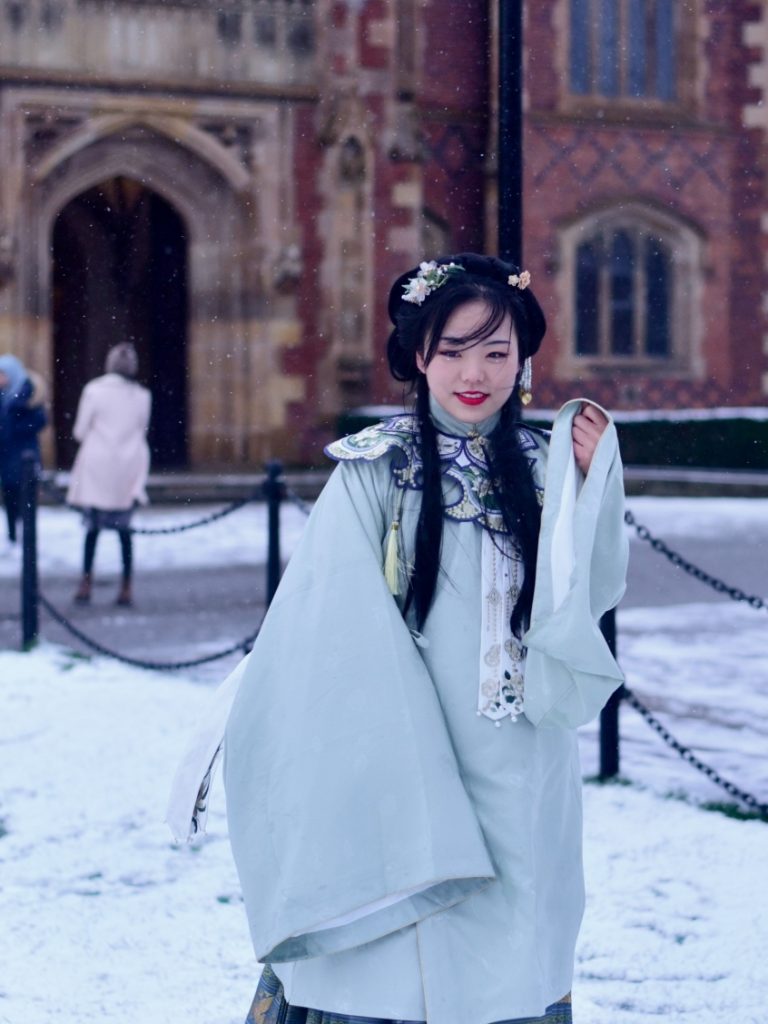
SONG Yihui (宋一卉), a recently graduated doctoral student from School of Chemistry and Chemical Engineering, has a number of hobbies rooted in traditional Chinese culture, including calligraphy, classic dancing and Hanfu costume. Below she tells us how she has maintained her practice of Chinese calligraphy since childhood.
I first learned calligraphy when I was eight years old, probably because of my curiosity facilitated by my parents. At that time, I started from learning to write the basic strokes – horizontal and vertical, which required a lot of patience and perseverance. I was so envious of other fellows who could exercise their skillful hands freely. However, after learning Yan-style of calligraphy for three years when I wrote with more confidence, I had to put down my brush and switched my full attention to my study which became more demanding. It was not until in my college time that I picked up my brush again with my genuine passion for calligraphy. This flame of enthusiasm has been kept for my life in the UK. When I was packing up my luggage, I had no hesitation to include my beloved set of calligraphy treasures in the suitcase.
To me, calligraphy is a journey of time and space through the written form of our language, with which I could always conduct spiritual dialogues with our ancestors thousands of years ago.
Below is a selected collection of Yihui’s calligraphic works.
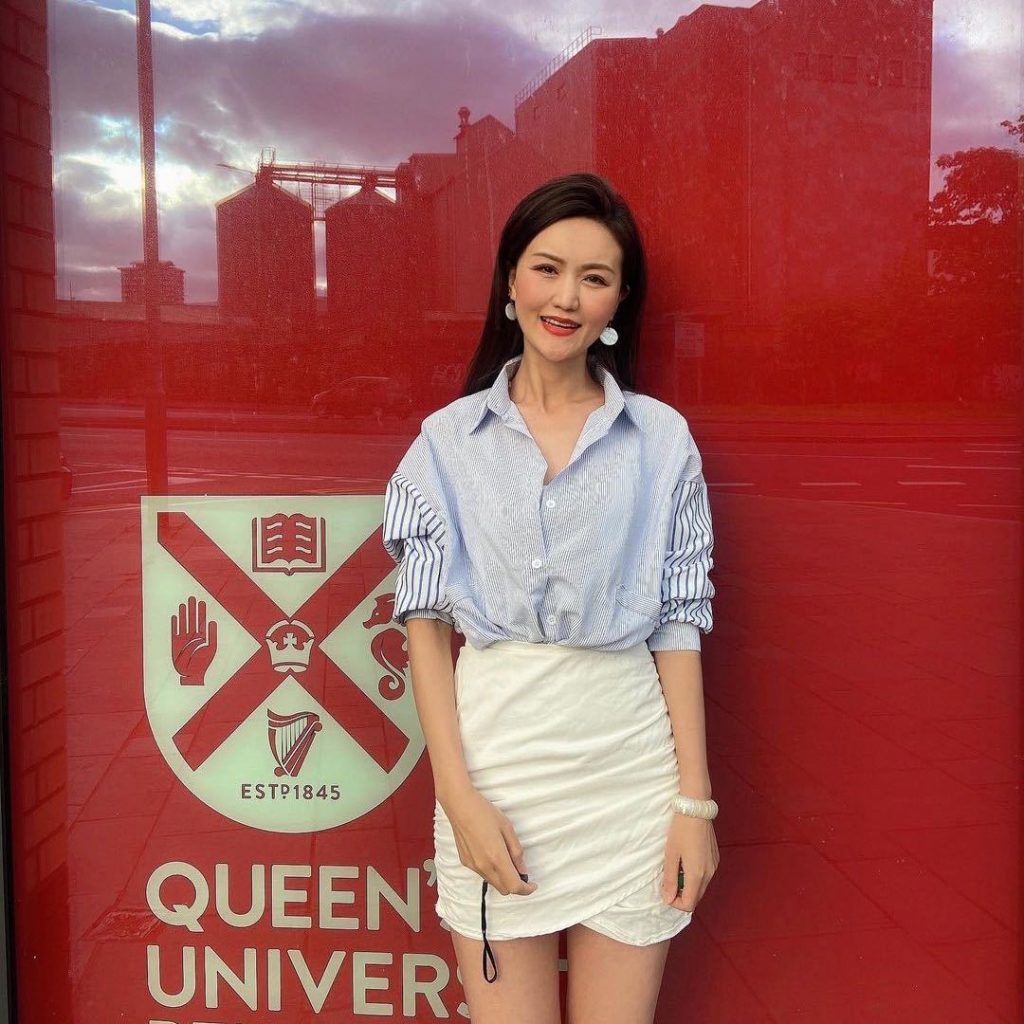
WEI Ziqing (魏子晴) is currently doing MA Interpreting at the School of Arts, English and Language. Among her many talents she has a strong passion for recitation. In the recent QUB Multilingual Poetry and Music Festival she contributed to the event by doing a Chinese poetry recitation – ‘The Chinese Language’. With her kind permission, we invite her to share with us her recitation.
To be honest, my performance on the day was not really as perfect as I thought. However, I found that at least three girls from the audience were moved to tears, to my great surprise. One of the girls later said to me that even though she could not understand the language, her heart was greatly touched by the sound of language and she couldn’t help shedding tears.
Below is the Ziqing’s Instagram post on her recitation, followed by the bilingual text versions.
中国话
有一种语言,它 很神秘,它蕴涵着一个民族上下几千年 悲喜交加的情感;
有一种语言,它很古老,古老到那刻在骨头上的文字里都找不到 它的起源;
有一种语言,它很丰富,阴阳上去中 回荡着 慷慨激昂 倾诉着 温宛 缠绵;
这,便是中国话,
一个古老的 东方神话!
中国话,
是如诗如画的表达,
“树索索而摇枝,马得得而驰骋”
——哪一种语言
有 如此逼真的描摹?
“落霞与孤鹜齐飞,秋水 共长天一色”
——哪一种语言
能说出如此图画般的美丽?
“春江潮水连海平,海上明月共潮生⋯⋯”
——哪一种语言 能有 如此动听的节律?
“我失骄阳君失柳,杨柳轻扬直上重霄九”
——哪一种语言
能一语译透你丰厚的含义?
中国话 是中国人
心灵深处的吐纳。
是屈原的长叹 ,项羽的啸吼
是李白的浪漫 ,杜甫的讥讽,
是“五四”前夜,
李大钊在拊掌欢呼
《庶民的胜利》,
是面对敌人的屠刀,
鲁迅在指斥《无声的中国》,
是迎着特务的枪弹,
闻一多拍案而起,弘扬正义!
是礼炮声中毛泽东庄严宣告:民族 站起!
那黄河的不羁和刚强,是中国话!
那长江的奔放和潇洒,是中国话!
那大山的雄武,高原的粗犷,是中国话!
那江南的温柔,水乡的秀雅,是中国话!
听,中国话正在通过我的喉头在联合国的讲台上响起
–那么亲切,优美,
—那么有力,伟大!
中国话 你属于一个伟大的民族,
一个朝阳升腾的天地!
我爱你,我们的 中国话!!!
The Chinese Language
There is a language – it is very mysterious and contains the emotional ups and downs of a nation for thousands of years;
There is a language – it is so ancient that its origin cannot be found in the characters engraved in bones;
There is a language – it is very rich, resonating with generosity and passion, warmth and tenderness in the alternation of Yin and Yang;
This is the Chinese language.
An ancient oriental myth!
Chinese language
is an expression like poetry and painting.
‘The trees rustle and shake their branches, The horses gallop and run freely.’
–which language
has such a vivid illustration?
“Rosy evening clouds and the lonely duck fly together; The autumn water shares the same colour with the sky.”
–which language can tell such picturesque beauty?
‘The spring tide of the river joins the sea, and the bright moon rises with the tide on the sea…’
–Which language can have such an enchanting rhythm?
“I’ve lost my sun, you’ve lost your willow, the willow lightly rises to the Ninth Heaven”
–what other language
Can translate the richness of your meaning in one word?
Chinese language is the breathing of the Chinese people’s soul.
It is the long sigh of Qu Yuan, the roar of Xiang Yu,
The romance of Li Bai, the irony of Du Fu.
It is Li Dazhao cheering and applauding
“The Victory of the Common People” on the eve of May Fourth Movement,
It is Lu Xun criticizing “The Silent China” in the face of enemy’s butcher’s knife,
It is Wen Yiduo rising up and promoting justice in the face of bullets from secret agents,
It is Mao Zedong solemnly declaring “The Chinese nation has stood up!” amidst the sound of salute.
The recklessness and fortitude of the Yellow River is Chinese language!
The unrestrained and boldness of the Yangtze River is Chinese language!
The magnificence of the mountains, the ruggedness of the plateau, is Chinese language!
The gentleness of the south of the Yangtze River, the elegance of the water town, is Chinese language!
Listen, the Chinese language is echoing through my voice on the podium of the United Nations
-So friendly, beautiful,
-So powerful, great!
Chinese language , you belong to a great nation, a world where the sun rises!
I love you, our Chinese language!
Sign up for a Chinese course
If you would like to learn more about the beauty of the Chinese language and are interested in attending a course, you are welcome to check our courses below and register as soon as you can. The cutting off date is rightly on Thursday 20 April, the UN Chinese Language Day! Don’t miss out!
